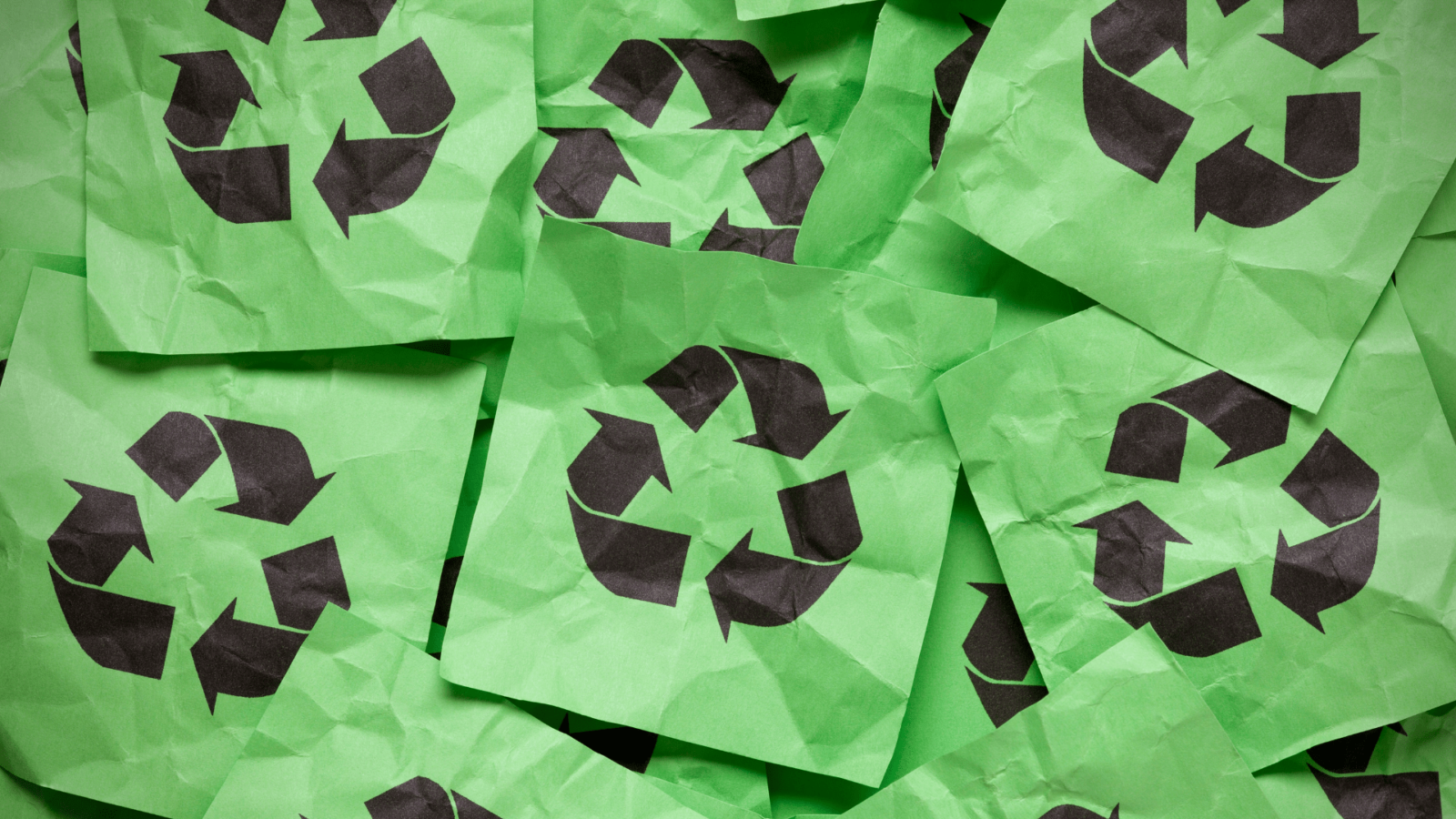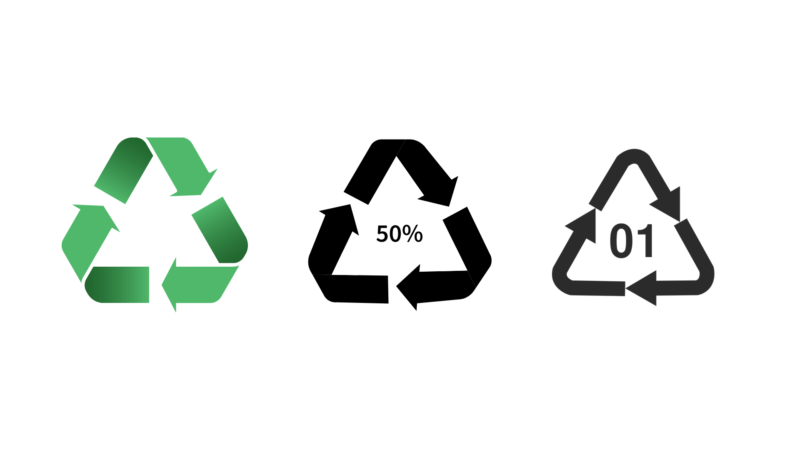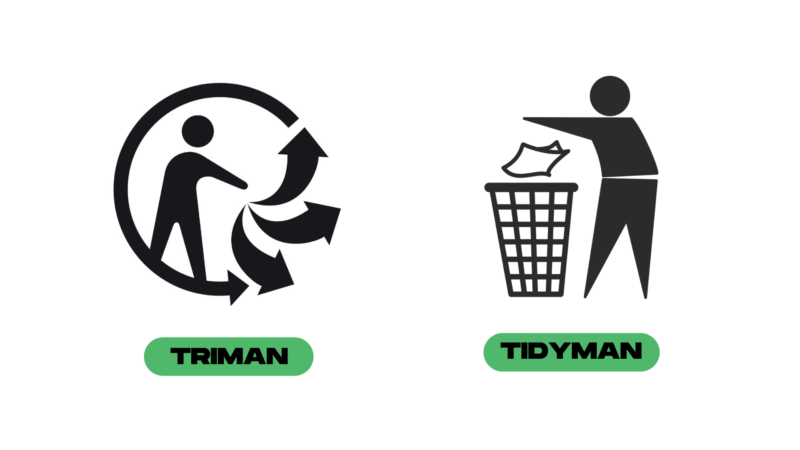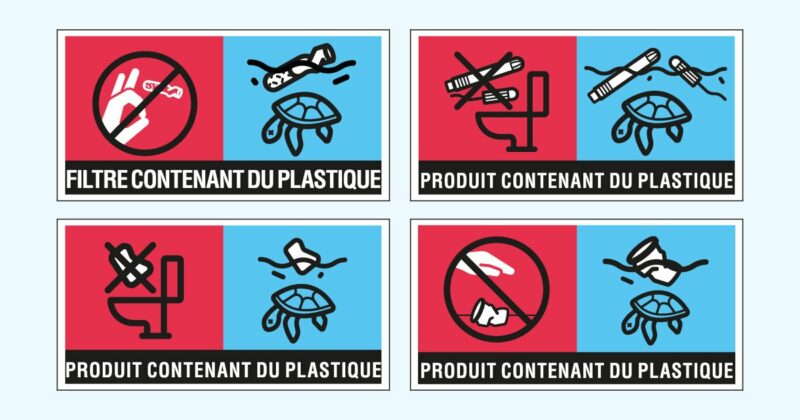Meaning of the recycling symbols and logos: let the masks down!
Plastic pollution
7 July 2022

They are everywhere! Behind the packaging, under the milk bottles, tiny on a label... The logos related to recycling were created to guide consumers in their sorting process, if necessary for a better recovery of waste.
This initiative is commendable, but today, they are numerous, often look alike, and sometimes confuse the most seasoned consumer. You know them all, but do you know what these logos really mean? The SeaCleaners will explain it to you.
The misunderstanding of the Green Dot logo
The most famous of all! Appeared in 1992, this green symbol seems to evoke perpetual regeneration.
59% of French people think that this symbol means that the product is recyclable (UFC – Que Choisir).
Do you think so too? Well, not at all.
The Green Dot logo is not an ecological symbol and does not mean that the product is biodegradable or recyclable.
It means in fact that the producer of the packaging must pay a contribution to an eco-organization which participates, as it is legally obliged, in the financing of the development of recycling.
Often criticized as likely to mislead the consumer and undermine the proper functioning of recycling channels, the use of the Green Dot on packaging was to be penalized in France by a penalty from April 1, 2021.
This penalty was suspended by the Council of State on the eve of its implementation, pending a decision on the merits. In the meantime, the Green Dot continues to cause confusion with impunity.


The Möbius strip puzzle
The Möbius strip has been the universal symbol of recycling since the 1970s. It evokes the endless cycle of recycling. This symbol can be found on packaging that is said to be recyclable (according to the ISO 14021 standard). It aims to inform the end user of the recyclable nature of the product in order to encourage selective sorting.
The Möbius strip with %.
So far, so good. But things get more complicated when you find the same Möbius strip with a % in its center. In this case, the Mobius strip does not indicate the recyclability of a package, but the percentage of recycled content used to produce that package.
The Möbius strip around a number
This symbol looks like the Möbius strip, but it has a completely different function. There are urban legends about this number, such as the number of times the package has been recycled…Wrong! This triangle actually indicates the material that the product package is made of. The number inside the triangle identifies the type of plastic used. Be careful, it does not give any indication on whether the packaging can be recycled or not.
The families of plastics
- PET – ethylene polyetherphthalate – water bottles, soda bottles, disposable packaging, fleece clothing…
- HDPE – HIGH DENSITY POLYETHYLENE – Milk bottles, cleaning products, medicine bottles…
- PVC – VINYL POLYCHLORIDE – Pipes, windows, doors…
- LDPE – LOW DENSITY POLYETHYLENE – Plastic bags, films and pouches…
- PP – POLYPROPYLENE – Plastic parts for computers, cars…
- PS – POLYSTYRENE – cups, disposable plates, pens, yoghurt cups…
- OTHER – CDs, nylon, acrylic, goggles, baby bottles… In theory, all plastics are recyclable. In practice… this is rarely the case! If type 1 and 2 plastics are well recycled in France, some plastic waste remains difficult to treat. This is the case for packaging that is too thin or too light, such as plastic films, composite packaging, polystyrene yoghurt pots or plastic bags. Toys and dishes made of hard plastic are also not recyclable.


The “Man”
Triman is gradually becoming the benchmark logo to indicate that a product is recyclable. Unlike the Green Dot, it informs the consumer that the packaging is subject to sorting instructions.
Its sidekick, Tidy Man, does not indicate whether a waste product is recyclable or not. Its objective: to inform and encourage citizens to be respectful of the environment by not throwing waste on the ground, but in the garbage cans provided for this purpose.

The newcomers: the stamp and the turtle
No, this is not a new child story. Since 2021, the European law imposes the mention “Product containing plastic” in 4 families of products made from plastic and called “single use”:
- sanitary napkins, tampons and tampon applicators ;
- pre-soaked wipes for personal or domestic use;
- tobacco products with filters;
- beverage cups and glasses.
The purpose of this symbol is to alert consumers to the presence of plastic in products that do not, at first glance, appear to contain it.
Ecolabels
Tetra Pak
Developed by the Swedish company of the same name, it indicates that your food carton – made of FSC-certified cardboard – is 100% recyclable.
EU Ecolabel
The European Ecolabel symbol is present on products that guarantee respect for the environment during production and recycling of the product.

Plastic pollution is choking the oceans, unmanaged plastic waste emits greenhouse gases as it degrades in nature and contributes to global warming. Today, up to 14 million tons of plastic end up in the ocean every year. If we do nothing, this figure will triple in about 20 years. Among the solutions available to us, better waste recovery, recycling of more of the plastics we consume, the development of a circular economy that takes into account the entire life cycle of products, and a reduction in the daily consumption of plastic seem to be the reasonable way to start a more environmentally friendly transition. Consumer engagement on these topics (trash, sorting and plastic reduction) is obviously key to reducing plastic pollution globally, but citizen consumers are too often confused.
Brands, legislators and waste recovery organizations have a shared responsibility to work together to provide clear and informative information on the end-of-life of all plastics, and to optimize the recyclability of packaging and products placed on the market.